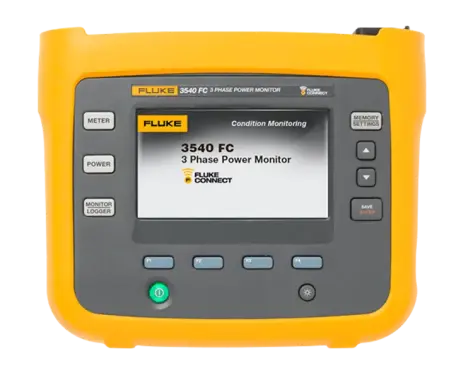Three Phase Power Monitoring
A three-phase power monitor detects changes in electrical variables. With power monitoring on your assets, you can help reduce wear and damage, while also identifying what’s causing it. The Fluke 3540 FC three-phase power monitor can be used remotely or through a stationary connection.
Three-Phase Power Monitoring FAQ
Power quality refers to two things: the quality of your power supply, and the ability of an asset to use that power. Ensuring power quality is key to both saving costs and maximizing profits. For example, unplanned downtime and maintenance due to power issues can cost a significant amount of time and money. In addition, machinery that uses power inefficiently can drive up your energy consumption and costs.
By optimizing your power, you reduce the risk of equipment overheating or failing unexpectedly, and you can reduce the maintenance costs associated with frequently responding to such issues. Furthermore, high quality power helps you maintain high levels of productivity and efficiency throughout your facility.

 PRUFTECHNIK Inc.
PRUFTECHNIK Inc. 

